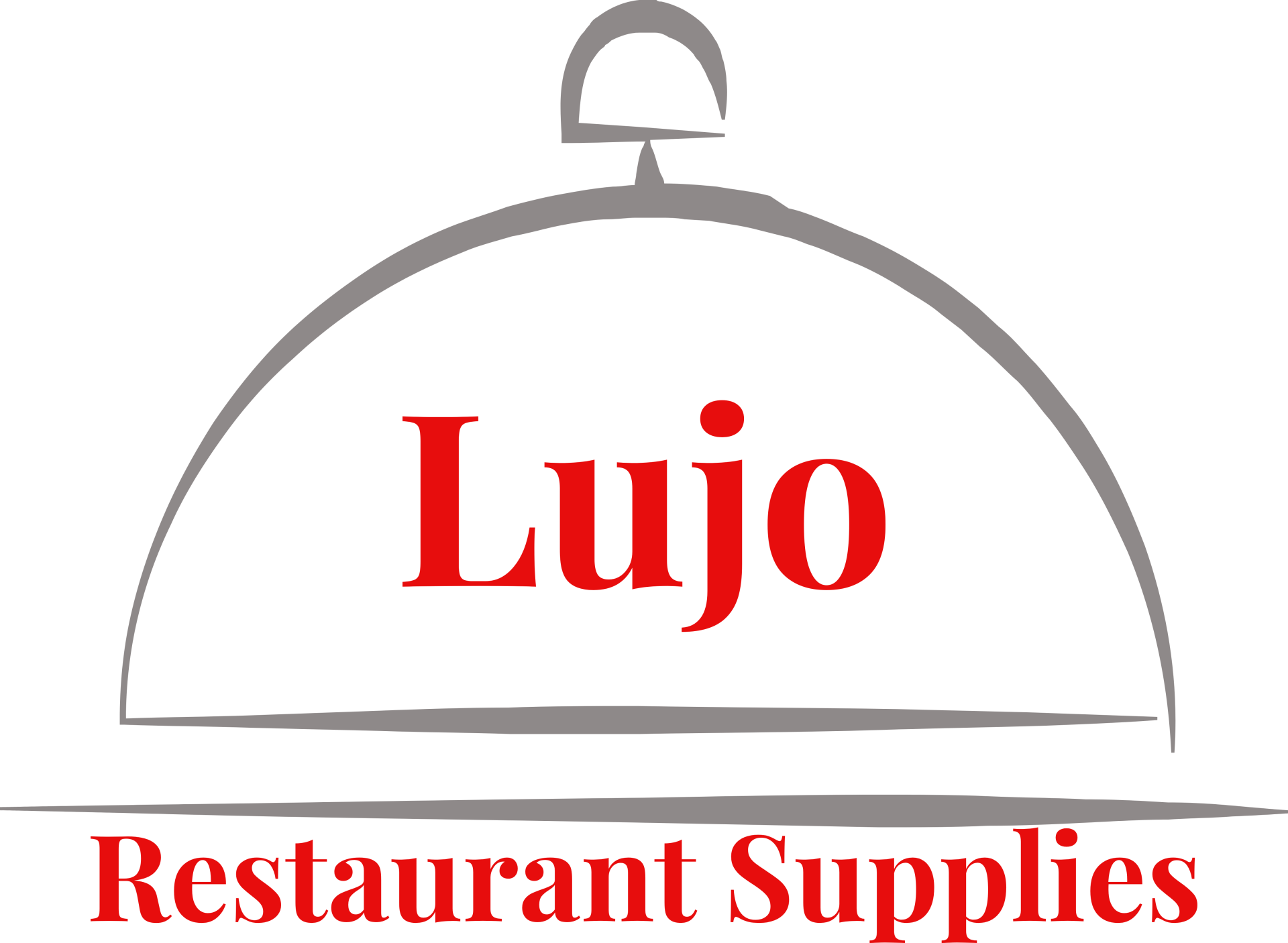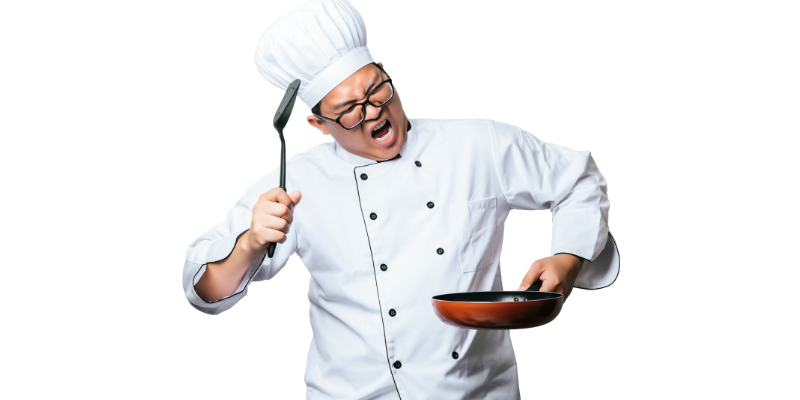Table of Contents
ToggleStress in a restaurant kitchen is a reality that many people overlook when enjoying a delicious meal at their favorite dining spot.
The hustle and bustle, the high temperatures, and the pressure to consistently deliver top-quality dishes can take a toll on kitchen staff.
In this blog post, we will dive deep into the world of a busy restaurant kitchen to understand the sources of stress and explore strategies to manage it effectively.
The Heat of the Kitchen: Understanding Kitchen Stress
In the heart of a bustling restaurant, the kitchen serves as the epicenter where culinary creativity meets relentless demand.
This dynamic arena is fraught with challenges that collectively contribute to an environment ripe for stress.
The clattering of pots and pans, the sizzle of grills, and the constant chatter of orders being called out create a cacophony that underscores the pressure felt by the kitchen staff.
At the core of this stress is the task of juggling multiple responsibilities simultaneously.
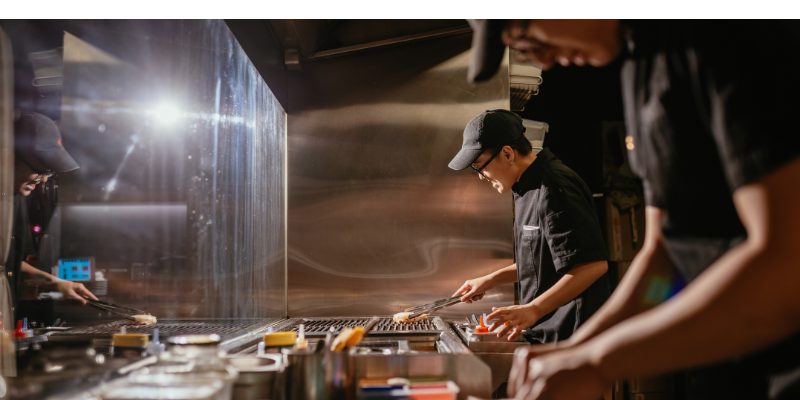
Chefs and cooks must meticulously prepare each dish to meet the high standards expected by patrons, while also ensuring timely delivery to maintain the flow of service.
The physical conditions within the kitchen further exacerbate the situation.
High temperatures from ovens and stovetops, coupled with the tight confines of the workspace, present a challenging environment in which to operate.
These factors, combined with the extended hours that kitchen staff often endure, contribute to a setting that tests the limits of physical and mental endurance.
Amidst this chaos, the kitchen brigade must operate as a well-oiled machine.
Each member plays a crucial role, from the line cooks to the dishwashers, and any misstep can have a domino effect, disrupting service and increasing stress levels.
The expectation to perform flawlessly under such conditions is a constant weight on the shoulders of kitchen staff.
It’s a delicate balance between maintaining the art of gastronomy and meeting the demands of a fast-paced service environment, illustrating the multifaceted nature of stress within the confines of a busy restaurant kitchen.
The Supply Chain Dilemma: How Suppliers Impact Stress in a Restaurant Kitchen
Navigating the unpredictability of supply chains poses a significant and often underappreciated source of stress within the pulsating heart of a restaurant kitchen.
The dependency on restaurant equipment suppliers for high-quality, timely deliveries is a critical aspect of daily operations.
Yet, it’s this very reliance that introduces a layer of complexity and tension, magnifying stress levels among kitchen staff.
When deliveries are late, incorrect, or of poor quality, the ripple effects are immediate and palpable.
Chefs find themselves scrambling to adjust menus last minute, while line cooks must quickly adapt to changes, often compromising on the intended quality or presentation of dishes.
This operational hurdle doesn’t just disrupt the kitchen’s workflow; it directly impacts the morale and stress levels of the entire culinary team.
The uncertainty of not knowing if ingredients will arrive on time or meet quality expectations adds an additional layer of pressure on an already intense environment.
The kitchen brigade, tasked with creating exceptional dishes under tight timelines, now faces the added challenge of doing so with potentially compromised resources.
The impact of supply chain disruptions extends beyond the immediate stress of adjusting to missing or substandard ingredients.
It can lead to increased food costs, further squeezing tight profit margins and heightening the stress related to financial management.
For a restaurant to thrive, a reliable, efficient, and transparent relationship with suppliers is not just beneficial; it’s essential.
By mitigating these supply chain issues, restaurant owners can significantly reduce one of the many pressures their kitchen staff faces, allowing them to focus more on their culinary craft and less on the uncertainties of ingredient availability.
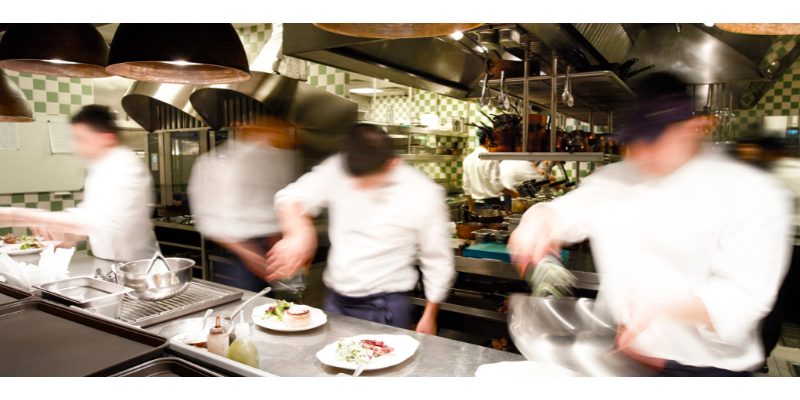
Cutting Costs, Not Corners: Managing Supplies Amidst Stress
In the throes of managing a high-stress kitchen environment, the pursuit of cost efficiency without compromising the integrity of the dining experience presents a unique challenge.
Addressing this requires a multifaceted strategy that extends beyond mere price negotiations with suppliers.
Streamlining the procurement process can be a game changer, enabling the kitchen to operate more smoothly and predictably, even under pressure.
Embracing technology for inventory management, for example, can lead to more accurate ordering, minimizing waste and reducing unexpected shortages that exacerbate kitchen stress.
Another avenue is exploring local sourcing options.
Not only can this approach foster relationships with local producers, potentially leading to more favorable pricing and fresher ingredients, but it also reduces the risk of delays in the supply chain, thereby lowering the stress related to ingredient availability.
Investing in kitchen efficiency is equally vital.
Modern, energy-efficient kitchen appliances can speed up cooking times, reduce utility costs, and ultimately free up resources that can be redirected to other areas of need within the restaurant.
Training staff to make the most of these tools can further enhance productivity and reduce stress by ensuring operations run more smoothly.
Adopting these strategies requires an upfront investment of time and resources, but the payoff is significant.
By focusing on efficiency and strategic sourcing, restaurant owners can mitigate some of the operational stresses that filter down to the kitchen staff, fostering a more positive and productive work environment.
Under Pressure: How Kitchen Stress Affects Staff Well-being
The relentless pace and high demands of a busy restaurant kitchen do not just challenge the culinary skills and efficiency of kitchen staff but significantly impact their physical and mental health.
The long hours on their feet, performing repetitive motions, and working in extreme temperatures lead to a myriad of physical health issues, including chronic back pain, burns, and cuts.
The mental toll is equally concerning, as the pressure to perform can foster an environment where anxiety and stress thrive.
This, in turn, can lead to burnout, where individuals feel overwhelmed, emotionally drained, and unable to meet constant demands.
The kitchen’s high-stress environment can also strain relationships among staff, contributing to a tense atmosphere that further exacerbates stress levels.
Without appropriate interventions, this cycle of stress can impact not only the well-being of individual staff members but also the overall functionality and productivity of the kitchen.
It diminishes the quality of the work environment and can lead to high turnover rates, with skilled professionals leaving in search of healthier workplaces.
Addressing the well-being of kitchen staff involves recognizing the signs of stress and taking proactive steps to create a supportive environment.
It requires a commitment to fostering a workplace that values mental health and physical safety equally, understanding that the sustainability of a high-performing kitchen is intrinsically linked to the well-being of its staff.
Implementing ergonomic solutions to reduce physical strain, along with structured schedules that allow for adequate rest, can mitigate some of the physical challenges faced by kitchen staff.
Concurrently, cultivating an atmosphere where open dialogue about stress and mental health is encouraged can help manage the psychological aspects, ensuring that the kitchen remains not just a place of culinary excellence but also a supportive and healthy environment for all staff members.
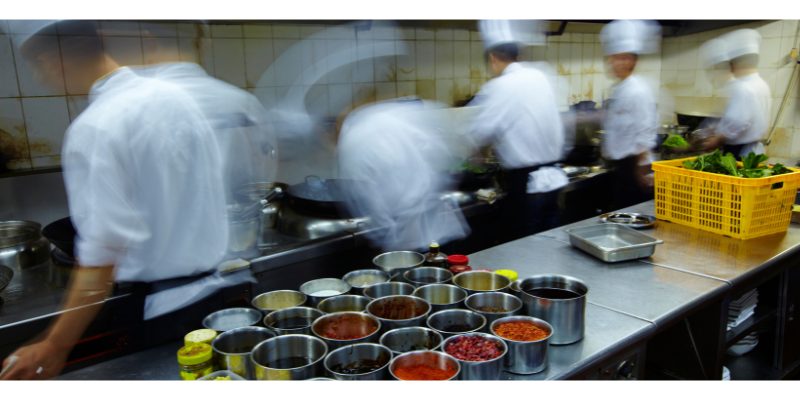
The Recipe for Resilience: Strategies for Managing Stress in a Restaurant Kitchen
Crafting resilience in the face of kitchen stress is an art and a science, requiring strategic foresight and a deep commitment to staff welfare.
Central to navigating this complex terrain is the adoption of a holistic approach to stress management, integrating both immediate relief tactics and long-term wellness strategies.
Scheduling is pivotal; ensuring that staff are not overworked and have sufficient time for rest and recuperation can dramatically lower stress levels.
Emphasizing the importance of breaks, even during the busiest shifts, allows staff moments of respite to recharge.
Equally crucial is the provision of mental health resources to mitigate stress in a restaurant’s kitchen.
This could range from access to counseling services to workshops focused on stress management techniques, equipping staff with the tools to manage their well-being proactively.
Furthermore, cultivating a kitchen culture that prioritizes open communication fosters a supportive environment where staff feel valued and heard.
Encouraging team members to voice concerns and suggestions not only aids in identifying stressors early but also promotes a sense of community and collective responsibility for the workplace atmosphere.
Investing in ongoing training and development can also alleviate stress by ensuring staff feel competent and confident in their roles.
Continuous learning opportunities demonstrate an investment in staff growth, enhancing their ability to adapt and thrive even in high-pressure situations.
Ultimately, the recipe for resilience in kitchen stress management is characterized by a balanced blend of proactive support, a healthy work culture, and individual empowerment, laying the foundation for a more resilient and thriving kitchen environment.
Beyond the Kitchen: The Role of Leadership in Mitigating Stress
Leaders at the helm of a restaurant have a pivotal impact on reducing kitchen stress.
A leader’s ability to exhibit empathy, maintain open lines of communication, and prioritize a positive work atmosphere directly influences the well-being of their staff.
By championing a culture of mutual support and understanding, they can significantly lessen the burden of stress.
